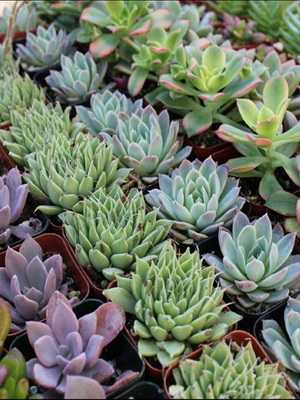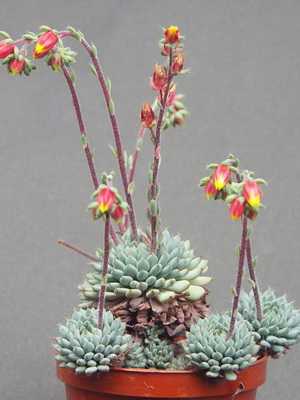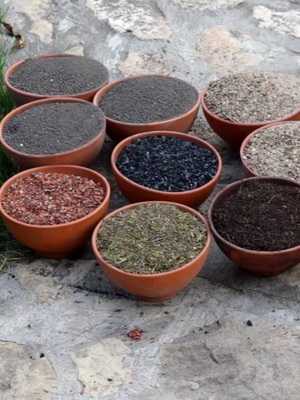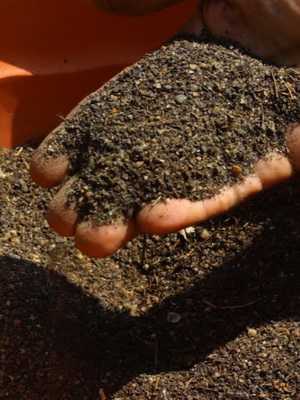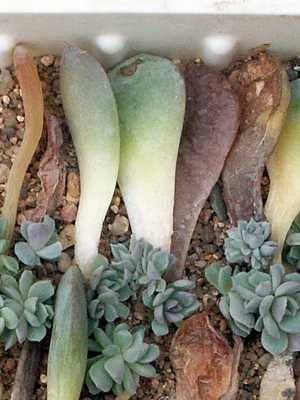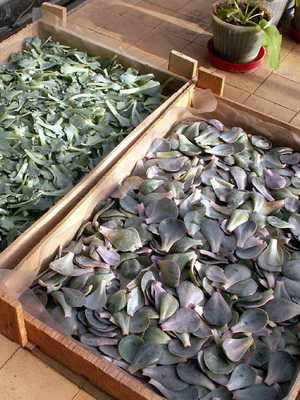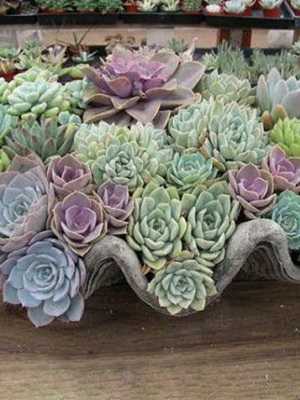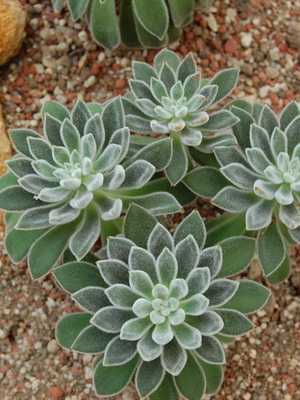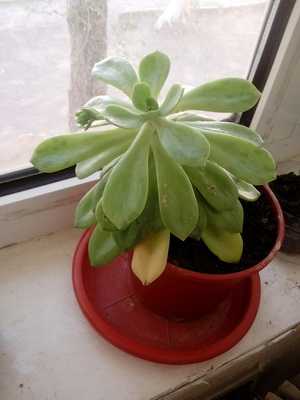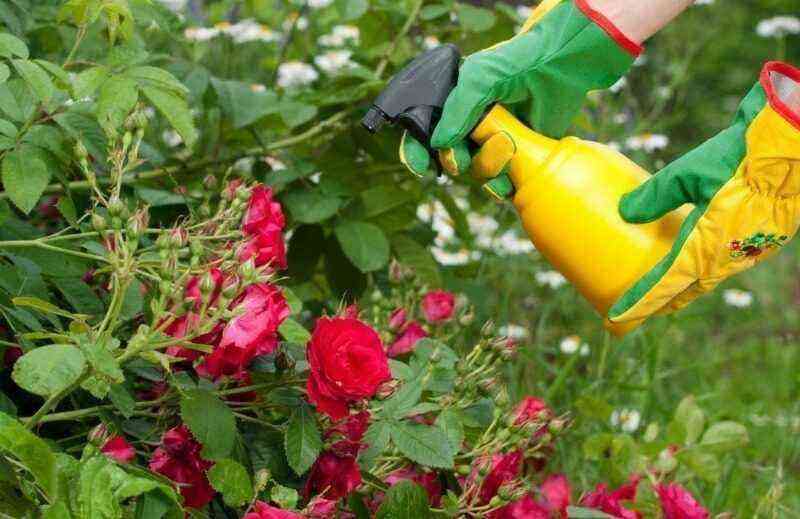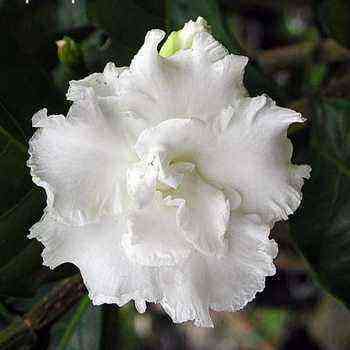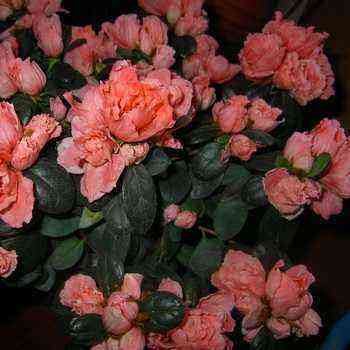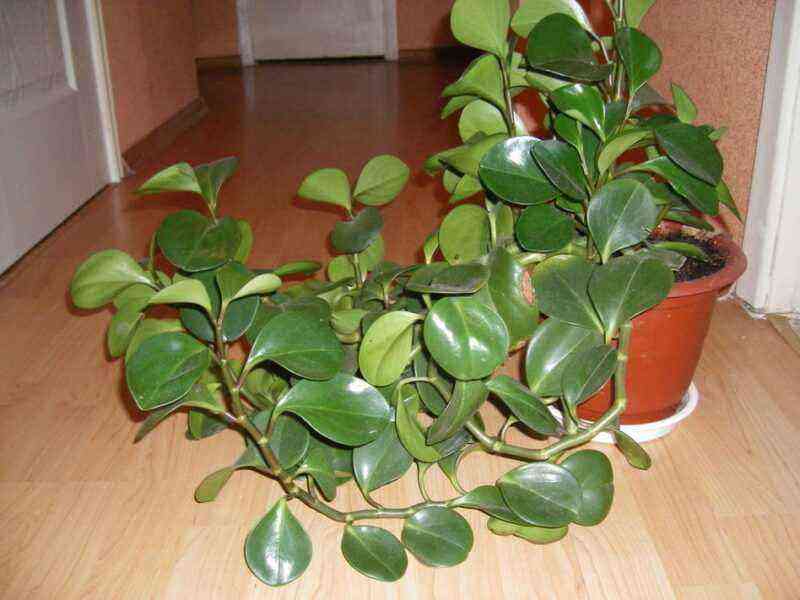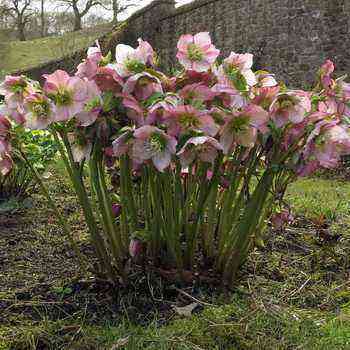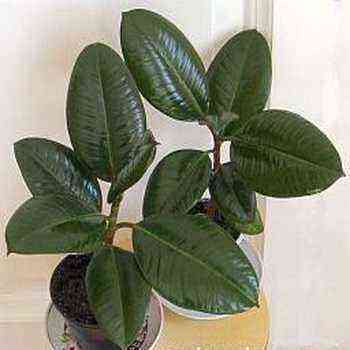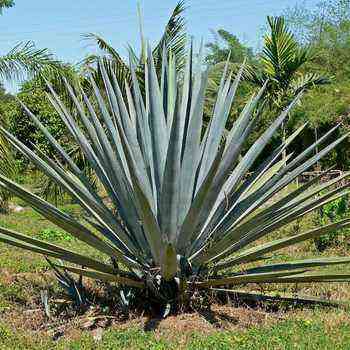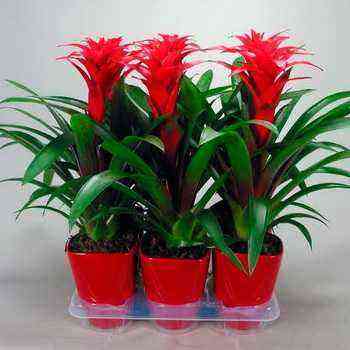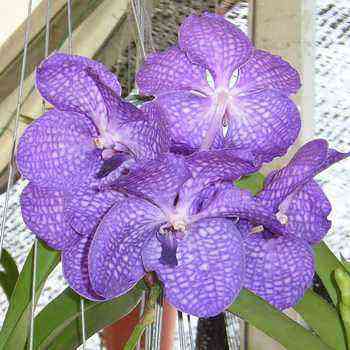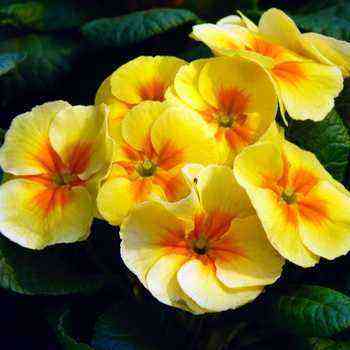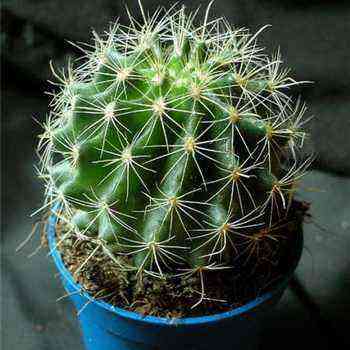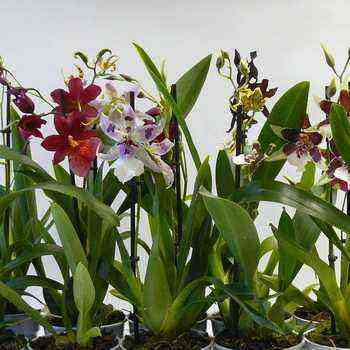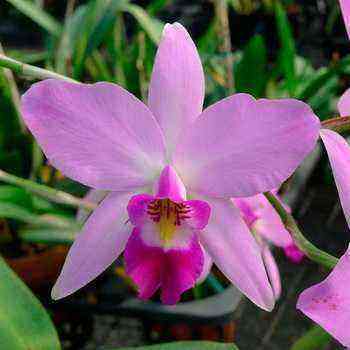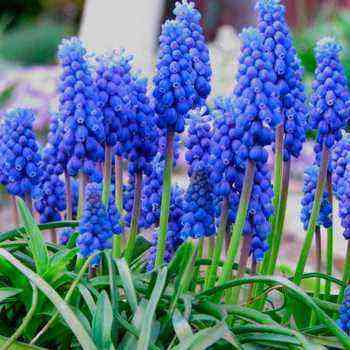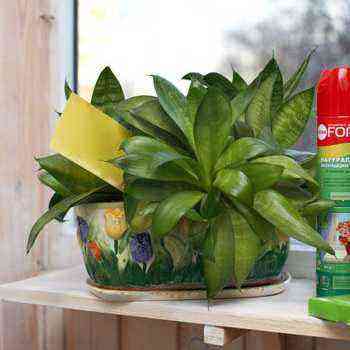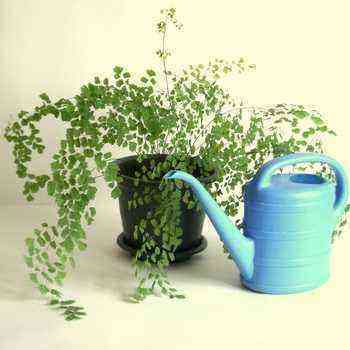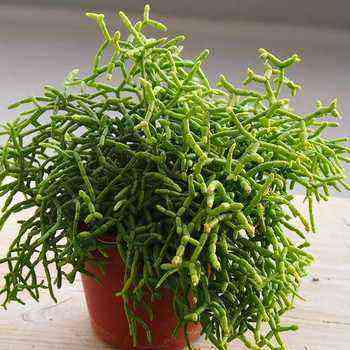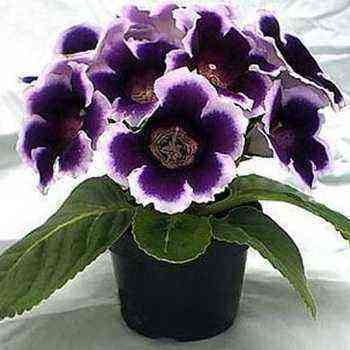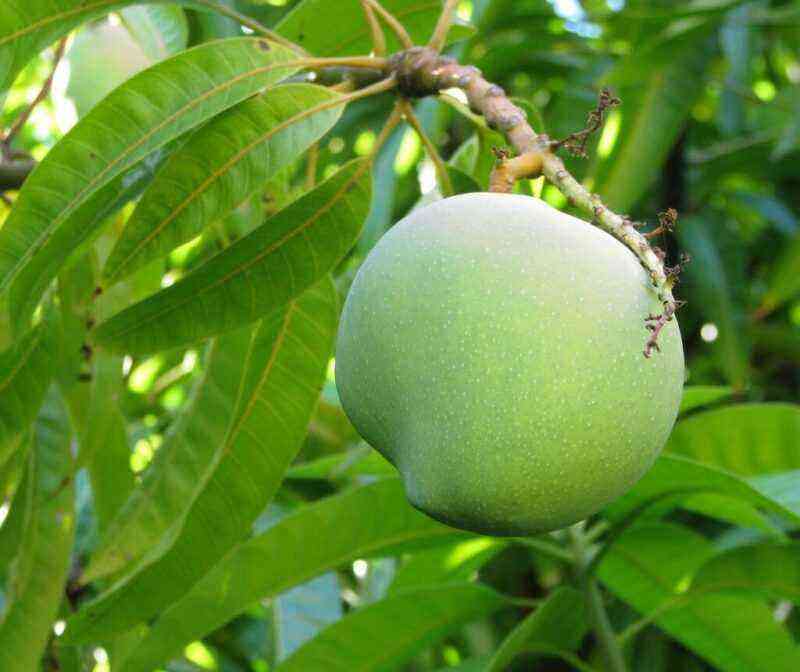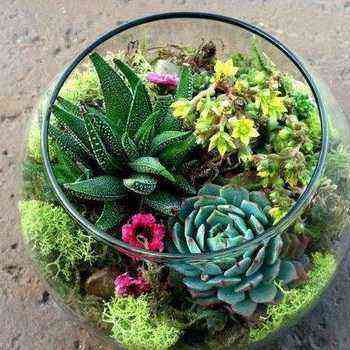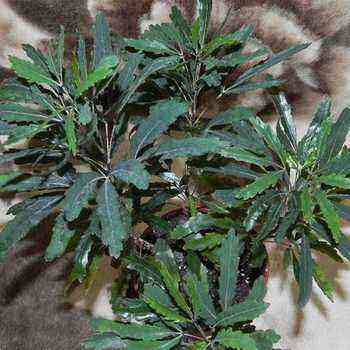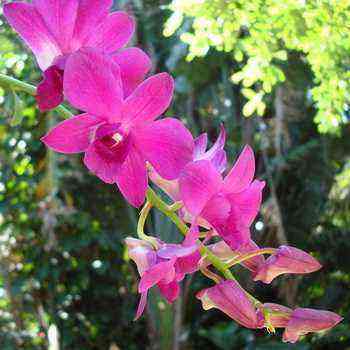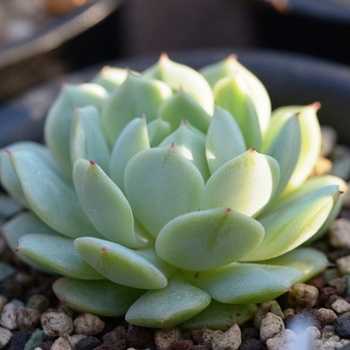
Description of echeveria and a photo of an indoor flower at the time of flowering
General Description of the Flower Echeveria is a perennial plant with oval-shaped leaves that are pointed at the top. Depending on the variety, they can be glossy, smooth, with fine pile. Flowering lasts approximately 31 days.
Family: Tolstyankovye.
Homeland – Mexico, Argentina, South America, southern USA. Echeveria is a succulent herbaceous houseplant with a thick, short stem. Leaves are juicy, fleshy, alternate, large, up to 15-30 cm long, which are often covered with a bluish-green waxy bloom, forming a rosette. The flowers are bell-shaped, numerous, yellow, orange, white or light red, collected in a complex racemose inflorescence. Blooms depending on the species from winter to summer
Inflorescences are in the form of a brush, an ear, an umbrella, with many flowers that look like small bells. Flowering is quite long – 14–20 days. With natural or artificial pollination, fruit-boxes with 5 nests appear, in which small dark brown grains will ripen.
Simple care and simplicity of reproduction allow you to admire Echeveria at home for a very long time. It is important to remember that they should be handled with great care. Each sheet is covered with a transparent wax film of a sky-gray color, it is she who absorbs all the useful substances and retains the liquid. If the shell is accidentally destroyed, then the flower begins to ache. But if this has already happened, and several leaves are damaged, you need to cover the plant with a plastic bag and hold it there until complete recovery.
Under natural conditions, Echeveria begins to bloom at the end of winter, at this time the plants are very beautiful. Indoor plants bloom around April. During flowering, the plant attracts great interest, the flowers look very impressive and unusual.
Echeveria is a fragile and vulnerable flower, rather unpretentious to care for. If you follow the elementary rules for its content, then it will always delight the eye and become the highlight of any composition.
Popular types and varieties of Echeveria: photos, descriptions and names of varieties
In nature, there are many varieties of Echeveria plants, up to 170. The most famous varieties:

Echeveria humpback-flowered “Pearl of Nuremberg” (E. gibbiflora ‘Perle von Nurnberg’)… A hybrid variety of humpback-flowered Echeveria has leaves with a pinkish-gray tint, over time creates an erect stem. Does not bloom indoors.
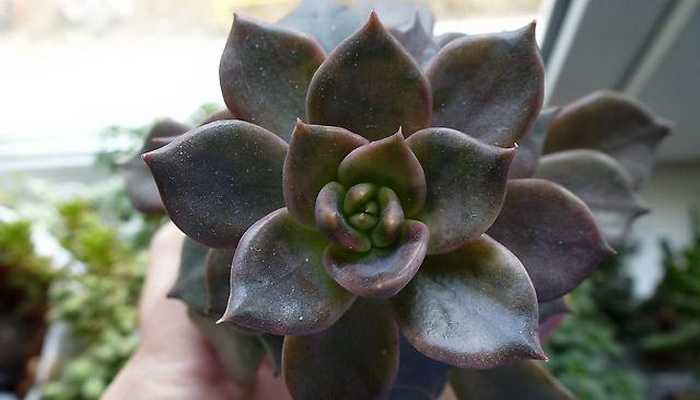
Echeveria “Black Prince” (E. ‘Black Prince’). A hybrid variety of Echeveria “Black Prince” is a rather demanding plant for light conditions, often affected by mealybugs. Leaves are red-brown in color, flower stalks appear closer to autumn.
Unfortunately, not all Echeveria can be grown at home.
Below are the types of plants that thrive in a room setting.
The most popular types:

Echeveria agave (E. agavoides)
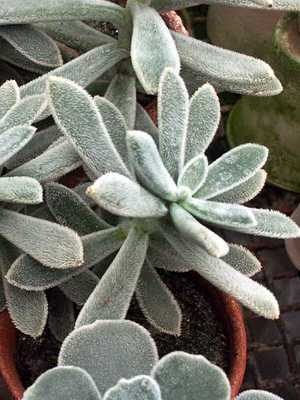
Echeveria white-haired (E. leucotricha)
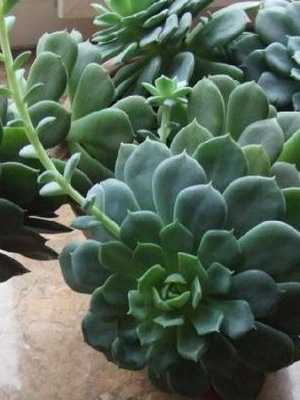
Echeveria Garms (E. harmsii)
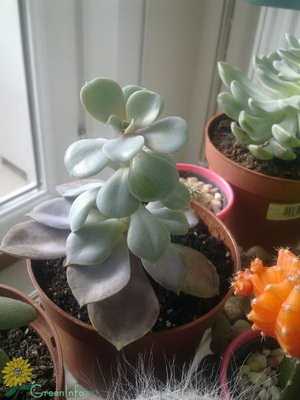
Echeveria humpback-flowered (E. gibbiflora)

Echeveria gray (E. glauca)
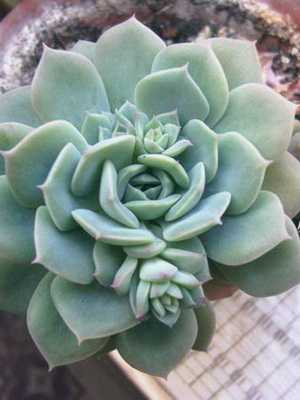
Echeveria knotty (E. nodulosa)
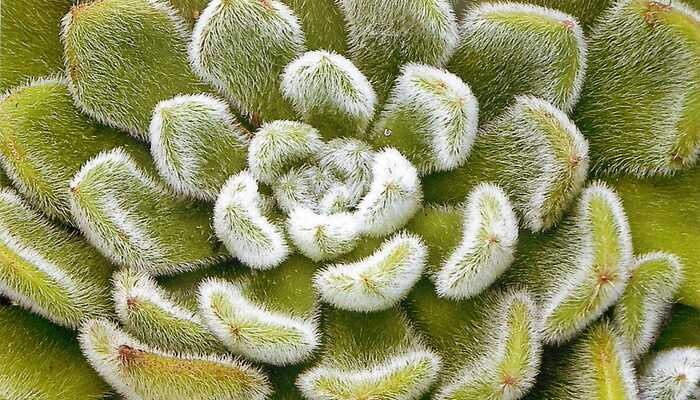
Echeveria bristly (E. setosa).
Take a look below at the photo with the names of the types of echeveria.
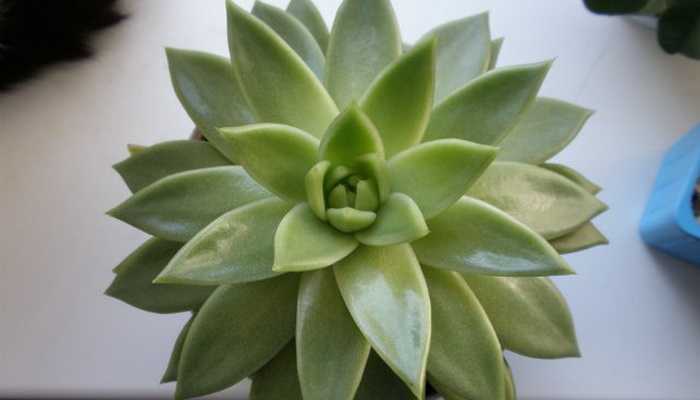
Echeveria agave – this is a species that grows with one rosette 29 cm in diameter, has no shoots, or they are insignificant.
The leaves are long, triangular in shape, with a smooth and shimmering surface. They have an intense malachite shade, with a scarlet color along the edge. In the middle of the rosette there is a yellowish-red pedicel up to 40 cm high.
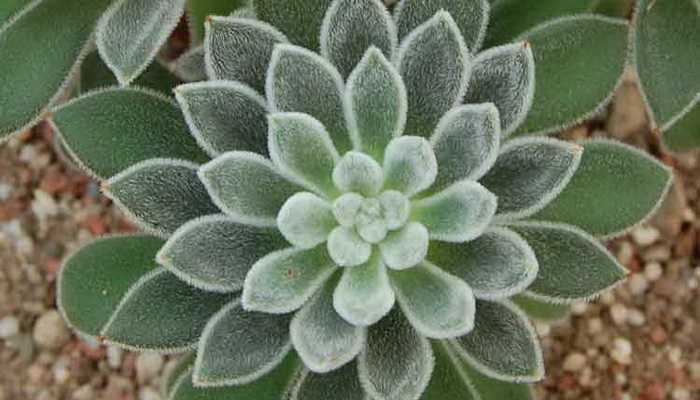
Echeveria whitish – a flower with a silvery pile, which eventually turns brownish and reaches a height of 21 cm.
The leaves are thick, fleshy, rounded at the ends and collected in rosettes. The flowers are up to 2 cm long and are orange-red in color.
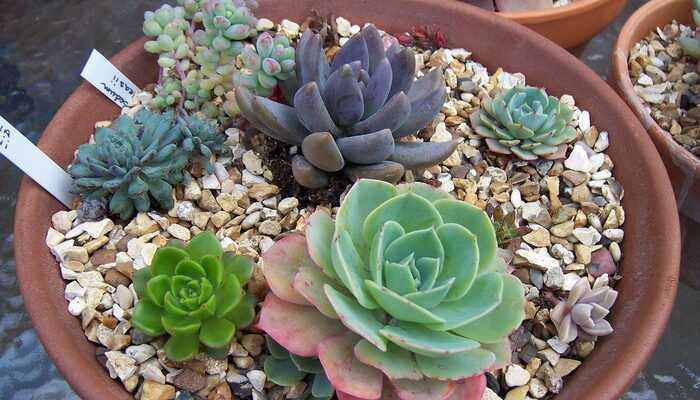
Echeveria Garms – indoor flower with small leaves in the shape of a rounded rhombus. Each end of the leaf plate is covered in red. The flowers are small, reddish-yellow in color.
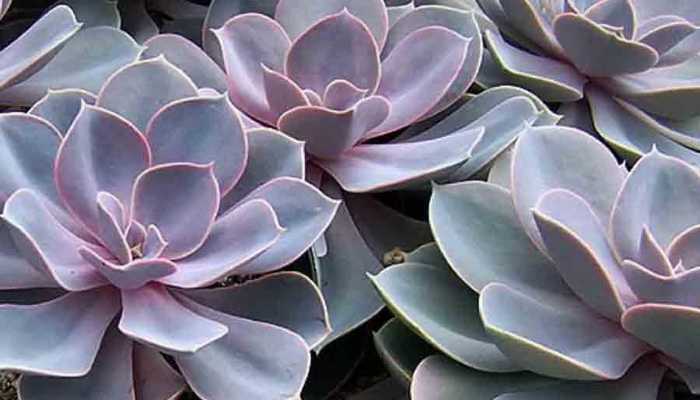
Echeveria humpback-flowered Is a plant that resembles a small tree.
Stems are straight, sometimes branching slightly. At the top of the shoots, rosettes with rather large grayish-green leaves are localized. The leaf plate is convex at the bottom and slightly concave at the top. In August, a tall peduncle grows, almost 1 m, similar to an ear. The flowers have a yellow center and a dark scarlet border. It is from this plant species that many hybrids have been derived.
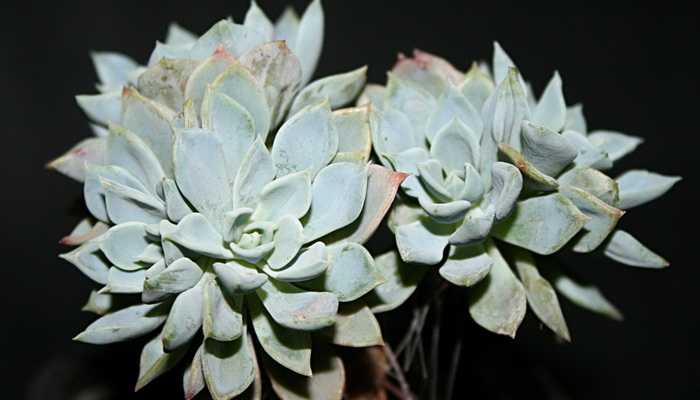
Echeveria gray – a small plant with many small rosettes. The leaves are wedge-shaped, blue-gray. Flowers of this species have a tangerine hue and are located on the side.
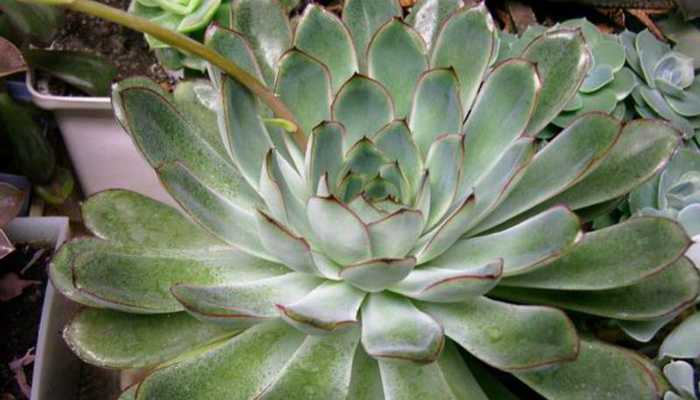
Echeveria knotty Is a flower with diamond-shaped leaves that have a striped purple-green color.
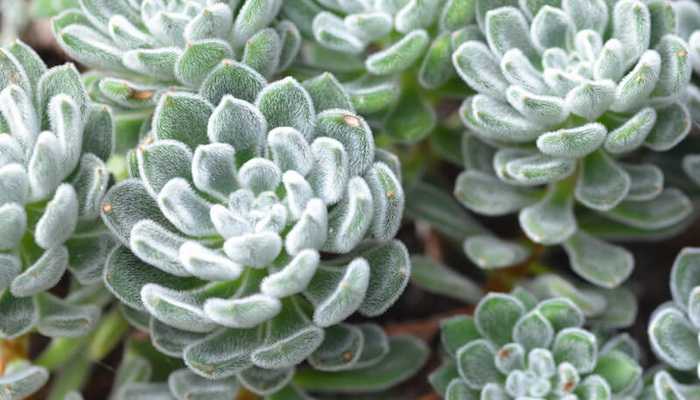
Echeveria bristly – a bush-shaped succulent, on which a large number of processes are formed.
The rosettes are spherical, in the middle of which there are many dark green leaves covered with white bristles. The flower stalk reaches a height of 30 cm, and the flowers resemble small yellow-orange tulips.
Look at the photo, which shows the types and varieties of echeveria plants:
How to care for echeveria: watering, fertilizing, planting and transplanting
Echeveria is an attractive and unpretentious plant. A bright, sunny location is required throughout the year. In winter they are kept at a temperature of 10-14 ° C. In the summer, they must be taken out into the air. Does not require high humidity. The substrate is ready-made soil for cacti or sandy soil with the addition of lime and leafy soil.
Watering is moderate. Echeveria does not tolerate excess moisture. In winter, watering is kept to a minimum. During the growing season, from March to August, the plants are fed with cactus fertilizers.
Agrotechnics of care when growing echeveria is quite simple. Plants only need 12 hours of bright daylight. If there is enough of it, the leaves acquire a dense thickness with a red border. The most suitable for growing plants is the southern side of the room. If the plants are recently acquired, then it must be adapted to the sun’s rays gradually to avoid burns on the leaves. In summer, the temperature in the room should be about 24 ° C, in winter – at least 7 ° C.
Do not use a spray to moisturize, this can lead to rotting of the leaves on top. The plant prefers to be indoors with dry air. In the hot season, watered as needed, when the soil in the pot is not wet. In winter, at low temperatures, watering should be reduced. If the air is warm, water it as needed, the water used must be settled or filtered. The main thing is not to forget that when watering, it is necessary to avoid getting liquid on the outlet with leaves, this can lead to its rotting.
As a soil, you can use a ready-made mixture for cacti. Or mix river sand, ordinary soil in equal proportions, and use expanded clay or small stone as drainage. In the active phase of growth, the flower can be fed. For this, special fertilizers are used for cacti. When it’s winter outside, the plant doesn’t need it.
Wide, not deep containers are used for planting echeveria flowers, since the root system of the plant is not deep in the soil.
Every year they need to be replanted, this must be done carefully enough, because you can accidentally damage the leaves if you touch them with your hands. If the plant is recently acquired, then it is recommended to place it in another pot after a couple of weeks. Before transferring a flower to a new container, it does not need to be watered for several days. After transplanting, water the room echeveria with filtered water.
Reproduction of echeveria by cuttings, leaves, rosettes and seeds
Reproduction is done by cuttings, rosettes, seeds and leaves.
Echeveria can be successfully propagated by cuttings. The leaf cutting must be rooted in moist soil or coarse sand. After about 30 days, the flower will start to take root.
Echeveria grows quite successfully as a leaf. It is necessary to separate the leaf from the mother plant. To prevent it from festering, dry it for about a week. After this procedure, place the sheet with the outside on damp soil, in a room with a temperature of 25 ° C. When a small rosette appears, the plants need to be planted in different pots.
Echeveria can be propagated by rosettes. Separate the rosette from the adult flower and treat it with crushed coal, then dry it for 12 hours. Then plant in wet sand. For this type of reproduction, the earlier appearance of peduncles is characteristic.
Echeveria can be grown from seeds, this method is considered the most difficult. When the plant blooms, pollinate the flowers and harvest the seeds from them when they are ripe. Next, you need to prepare the sour soil for planting seeds. They need to be superficially placed on the soil, not sprinkled with earth. Send the container with seeds to the sunny side in a cold place. The temperature should be at least 25 ° С, high humidity is obligatory. It is best to germinate seeds in a container with a transparent lid and a good drainage system. Thanks to this method of reproduction, many sprouts can be obtained at once.
See what the echeveria flower looks like in the photo:
Why echeveria leaves turn yellow: diseases and pests (with video)
For preventive purposes, the flower can be treated with insecticides, which will help save it from such a pest as a worm. If the stem, leaves, roots become loose and soft to the touch and darken, then perhaps this is a root rot disease. The leaves begin to shrink, turn yellow and crumble, the plant dies. It will not be possible to save a very rotten flower, you can only throw it out, leaving more or less healthy parts in advance, so that you can then try to root them.
To transplant a flower, it is imperative to sterilize the container and new soil. With a sharp knife, cut off the entire root system, stems, leaves of a plant with even slight traces of blackness, occupying 4 cm, which look healthy, most likely there are spores of the fungus there. Sprinkle the slices with activated carbon, then dry the plant for about 6 hours and plant again.
Sometimes the leaves of Echeveria begin to turn yellow. Most often this happens from the fact that water has stagnated in the soil. If the lower leaves turn yellow, then you should not worry – this is a normal natural process. The leaves are simply replaced, the flower prepares to grow new ones, and discards the old ones.
In winter, the leaves of the plant can sometimes dry out from below. When they fall away, new babies usually grow up. If this does not happen, then most likely the reason is the moisture that has accumulated in the soil. Sometimes the leaves curl up, which can signal improperly selected fertilizers.
